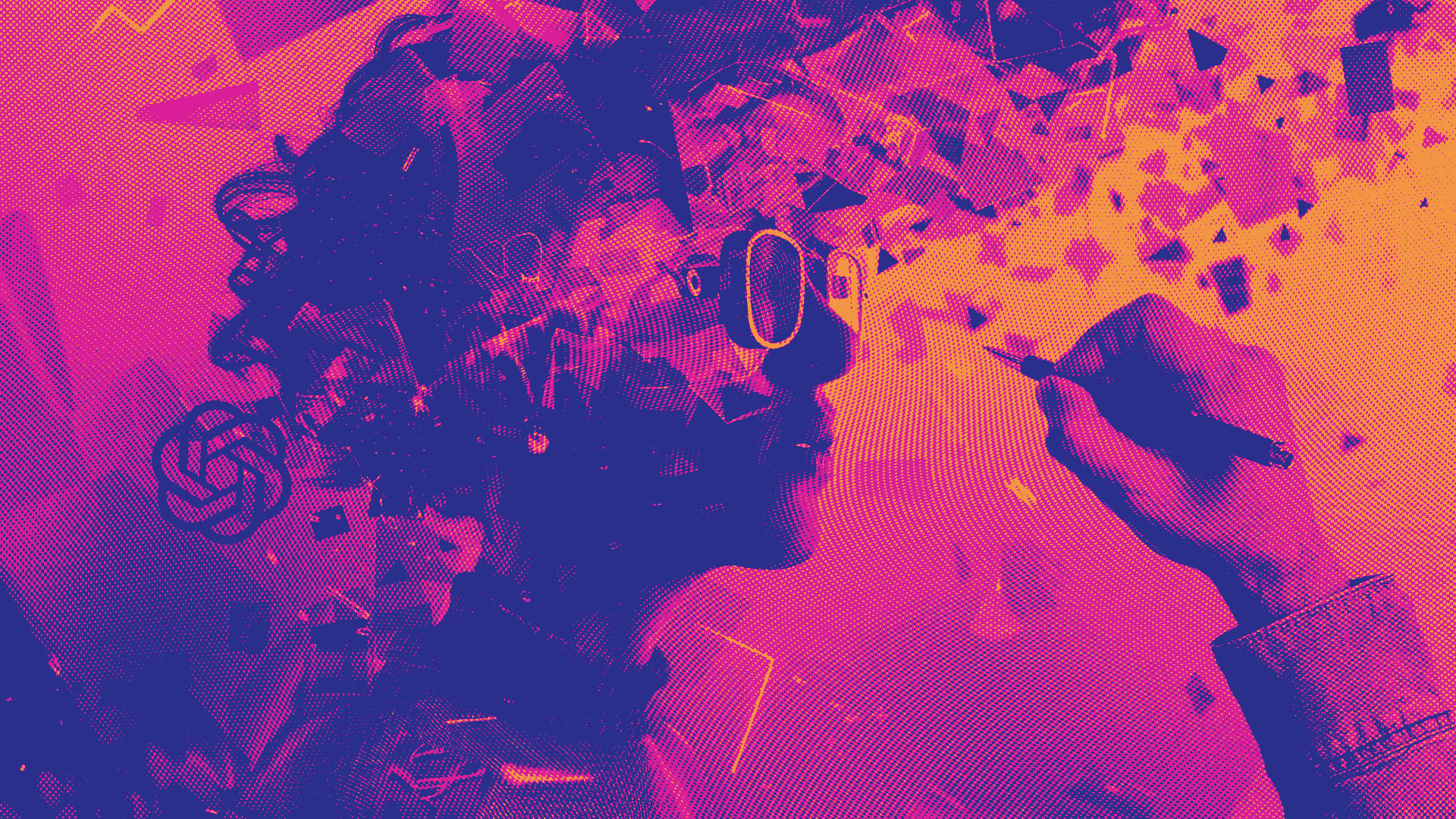Table of contents
The rapid evolution of AI in content creation
Artificial intelligence has shifted from a supplementary tool to a central force in digital content production. In 2025, AI-driven platforms can generate high-quality text, images, and videos at an unprecedented scale, enabling brands to maintain a continuous online presence. This rapid evolution has made content production more efficient, reducing the time and effort needed for ideation and execution. As AI systems become more sophisticated, their ability to mimic human creativity grows, blurring the lines between machine-generated and human-crafted content.
Despite these advancements, the challenge remains: how can brands scale content without compromising creativity and authenticity? Consumers crave connection and originality, making it essential to ensure that AI-generated content does not become formulaic or detached. While AI can accelerate production, it requires strategic human oversight to maintain engagement, emotional depth, and a brand’s unique voice. Striking this balance is key to leveraging AI’s power without diminishing the impact of storytelling.
The challenge: balancing automation and authenticity
AI-driven content generation is efficient, but efficiency alone does not create meaningful engagement. Audiences can detect when content lacks personality or feels mass-produced. The increasing reliance on AI poses the risk of producing generic, repetitive material that fails to resonate. Authenticity in content marketing depends on the nuances of human creativity—emotion, cultural awareness, and narrative depth—that AI still struggles to replicate fully.
Brands must navigate this challenge by integrating AI as a tool rather than a replacement for human creativity. The most successful strategies use AI for ideation, research, and drafting while allowing human writers and designers to refine and personalise content. This approach ensures that automation enhances, rather than replaces, the elements of storytelling that build trust and loyalty with an audience.
Advanced AI models and their role in scaling content
AI-driven content tools are no longer limited to simple text generation; they now create highly nuanced articles, social media posts, and even interactive media. Advances in large language models have enabled AI to adapt to various brand tones and styles, making automated content production more seamless than ever. These models analyse engagement metrics to predict what type of content will perform best, refining their output based on audience preferences.
While AI’s ability to generate vast amounts of content is impressive, volume alone is not enough to guarantee success. The effectiveness of AI-generated content depends on how well it aligns with a brand’s goals and audience needs. Businesses that implement AI thoughtfully—ensuring consistency in messaging and integrating human insights—gain a competitive edge by scaling their output without sacrificing relevance or quality.
Key trends in AI-assisted content creation
One of the most significant trends shaping AI content production is its growing role in personalised marketing. AI tools can tailor content to individual users by analysing behavioural data, creating a more customised experience. This shift towards hyper-personalisation allows brands to deliver content that speaks directly to their audience’s interests and needs, increasing engagement and conversion rates.
Another key trend is the rise of AI-assisted multimedia creation. AI is no longer confined to text-based content; it generates videos, podcasts, and interactive media with minimal human input. Businesses leveraging these tools can diversify their content strategies, ensuring their messages reach audiences across multiple formats. This expansion into AI-driven multimedia represents a new frontier in digital marketing, where creativity is no longer limited by production constraints.
The risks of AI overuse in content production
AI-generated content can be efficient, but without proper oversight, it risks diluting a brand’s unique identity. Many AI tools rely on vast datasets to generate text, meaning their output often lacks the distinctiveness that sets a brand apart. When businesses overuse AI without refining its output, they may end up with generic content that fails to reflect their values, tone, or storytelling style. This disconnect can erode trust and engagement, as audiences prefer brands that feel personal and relatable.
Beyond brand identity, excessive reliance on AI can strip content of the emotional depth that resonates with consumers. Human writers naturally weave in emotion, intuition, and cultural nuances—elements that AI struggles to replicate authentically. A brand that prioritises efficiency over connection risks alienating its audience, leading to lower engagement and diminished customer loyalty. AI should be used to enhance creativity, not replace the human touch that makes content meaningful.
Potential SEO and engagement drawbacks
Search engines increasingly prioritise high-quality, user-focused content, and AI-generated material does not always meet these evolving standards. Automated content often lacks originality and depth, which can impact rankings and visibility. Google’s algorithms continue to refine their ability to detect low-quality or repetitive content, making it essential for brands to use AI responsibly. Over-reliance on machine-generated content without human refinement can result in penalties, reducing organic reach.
From an engagement perspective, audiences expect content that feels fresh, relevant, and insightful. AI-generated material can become repetitive, producing variations of the same themes without true innovation. If users encounter similar AI-driven articles across multiple platforms, they may disengage, perceiving the content as uninspired. To maintain audience interest and search engine credibility, brands must balance AI efficiency with originality and strategic human input.
Enhancing creativity through human-AI collaboration
The most successful content strategies treat AI as a tool that supports human creativity rather than a substitute for it. AI can streamline research, generate drafts, and suggest structures, but human intervention remains crucial for refining tone, storytelling, and emotional resonance. Writers, designers, and marketers who integrate AI into their workflows without relying on it entirely can maximise both efficiency and originality.
One of AI’s strengths is its ability to analyse trends and audience behaviour, providing valuable insights that can inform creative decisions. When combined with human intuition, these insights lead to more engaging, relevant content. AI can handle the heavy lifting of data analysis, freeing up creative teams to focus on storytelling, innovation, and brand consistency. This partnership allows brands to scale content production without sacrificing authenticity or engagement.
Training AI models to align with brand tone and style

AI content tools can mimic writing styles, but they require structured input to align with a brand’s unique voice. Without careful training, AI-generated content may default to generic phrasing that lacks personality or consistency. Businesses must provide AI models with detailed brand guidelines, sample content, and specific tone preferences to ensure the output remains on-brand. This approach helps maintain a recognisable voice across all communication channels.
Pre-trained AI models can also be fine-tuned with custom datasets reflecting a brand’s history, values, and linguistic style. This method ensures that AI-generated content aligns with previous materials, reducing inconsistencies. When combined with human review, these models can produce content that resonates with an audience while maintaining the authenticity that distinguishes a brand from its competitors.
Quality control strategies for AI-generated content
Even the most advanced AI tools require human oversight to maintain quality and coherence. AI can generate factual errors, misinterpret context, or produce content that lacks logical flow. To prevent these issues, businesses should implement structured editorial processes where human editors refine and validate AI-generated drafts before publication. This ensures accuracy, relevance, and adherence to brand messaging.
Incorporating human feedback loops into AI systems also enhances long-term performance. This iterative approach strengthens AI’s role as a valuable creative assistant rather than an unchecked content generator. Consistent quality control safeguards brand credibility and audience trust, preventing AI from becoming a liability rather than an asset.
Editorial workflows for AI-assisted content production
A well-defined editorial workflow ensures that AI-generated content meets high standards before it reaches an audience. Businesses that integrate AI into their content production should establish a multi-step process, starting with AI-generated drafts and followed by human review, refinement, and approval. This approach balances efficiency with creativity, ensuring that AI supports rather than dictates content strategy.
Human oversight is particularly important for ensuring content accuracy and alignment with a brand’s objectives. AI-generated material can sometimes misinterpret data or produce misleading statements. A structured review process—where human editors fact-check, rewrite, and add strategic insights—prevents the publication of content that could damage credibility. Thoughtful integration of AI within an editorial framework ensures that automation enhances rather than compromises quality.
Future-proofing your content strategy
The rapid evolution of AI requires businesses to remain flexible in their approach to content production. What works today may become outdated as AI capabilities improve and search engine algorithms shift. To stay ahead, brands must regularly evaluate how AI fits into their content strategy, ensuring that automation remains an asset rather than a liability. Keeping up with advancements in AI-generated content tools allows businesses to refine their workflows and maintain a competitive edge.
Adapting AI use also means balancing automation with human insight. As AI tools become more sophisticated, they offer new opportunities for enhancing creativity, but they must be used strategically. Businesses should invest in training their teams to work alongside AI, optimising content processes without becoming overly dependent on automation. A future-proof strategy ensures that brands remain agile, adjusting to technological shifts while maintaining their core messaging and creative identity.
Blending automation with human expertise for long-term success
AI can enhance content creation, but long-term success depends on how well it complements human expertise. Relying solely on automation risks producing content that feels impersonal, repetitive, or disconnected from audience needs. The most effective strategies combine AI’s efficiency with the strategic thinking, emotional intelligence, and creative depth that only human creators can provide.
Brands that integrate AI thoughtfully will be better positioned to scale content without sacrificing quality. This means using AI for research, structuring, and ideation while allowing human oversight to refine storytelling and engagement. Content strategies that embrace this hybrid approach will remain adaptable and impactful, ensuring a sustainable balance between technology and human creativity in the years to come.
The future of AI-enhanced content creation
AI’s role in content production will continue to expand, offering businesses powerful tools for scaling their digital presence. However, the key to success lies in how AI is integrated into content strategies. Automation can enhance efficiency, but without human input, it risks producing content that lacks originality and depth. The brands that thrive in this landscape will be those that use AI to complement rather than replace human creativity.
As AI technology advances, businesses must stay proactive in refining their approach. Keeping content fresh, engaging, and aligned with brand identity requires ongoing human oversight. AI should serve as a creative assistant, enabling faster production without diminishing authenticity. Those who strike the right balance will harness the full potential of AI while maintaining the personal touch that builds audience trust and loyalty.
Key takeaways for brands scaling content responsibly
- AI is a powerful tool, but human creativity remains essential for maintaining brand voice and authenticity.
- Overusing AI can lead to generic content, reducing engagement and search engine credibility.
- Structured editorial workflows ensure quality control, preventing AI-generated errors or inconsistencies.
- Adapting AI use as technology evolves allows businesses to remain competitive in content production.
- The most effective strategies combine AI’s efficiency with human insight, ensuring long-term success.
FAQs
Can AI-generated content rank well on search engines?
AI-generated content can rank well if it meets search engines’ quality standards. However, without human oversight, AI-generated material may lack originality or depth, which can negatively impact rankings. Combining AI efficiency with human editing ensures high-quality, SEO-friendly content.
How can brands maintain authenticity while using AI?
Brands should train AI tools using existing content guidelines, sample material, and tone specifications to maintain authenticity. Additionally, human oversight should be part of the process to refine and personalise AI-generated drafts before publication.
Is AI-generated content safe from plagiarism risks?
AI tools generate unique content based on patterns rather than copying text directly. However, AI can sometimes produce material similar to existing sources. Running AI-generated content through plagiarism detection software and human review ensures originality.
What are the best use cases for AI in content creation?
AI is best suited for research, drafting, summarising, and generating structured content like product descriptions, social media posts, and email campaigns. For storytelling, brand messaging, and high-value content, human input remains crucial.
Will AI replace human content creators in the future?
AI will not replace human creators but will serve as an essential tool to enhance efficiency. Human creativity, emotional intelligence, and strategic thinking remain irreplaceable in crafting meaningful content that resonates with audiences.







